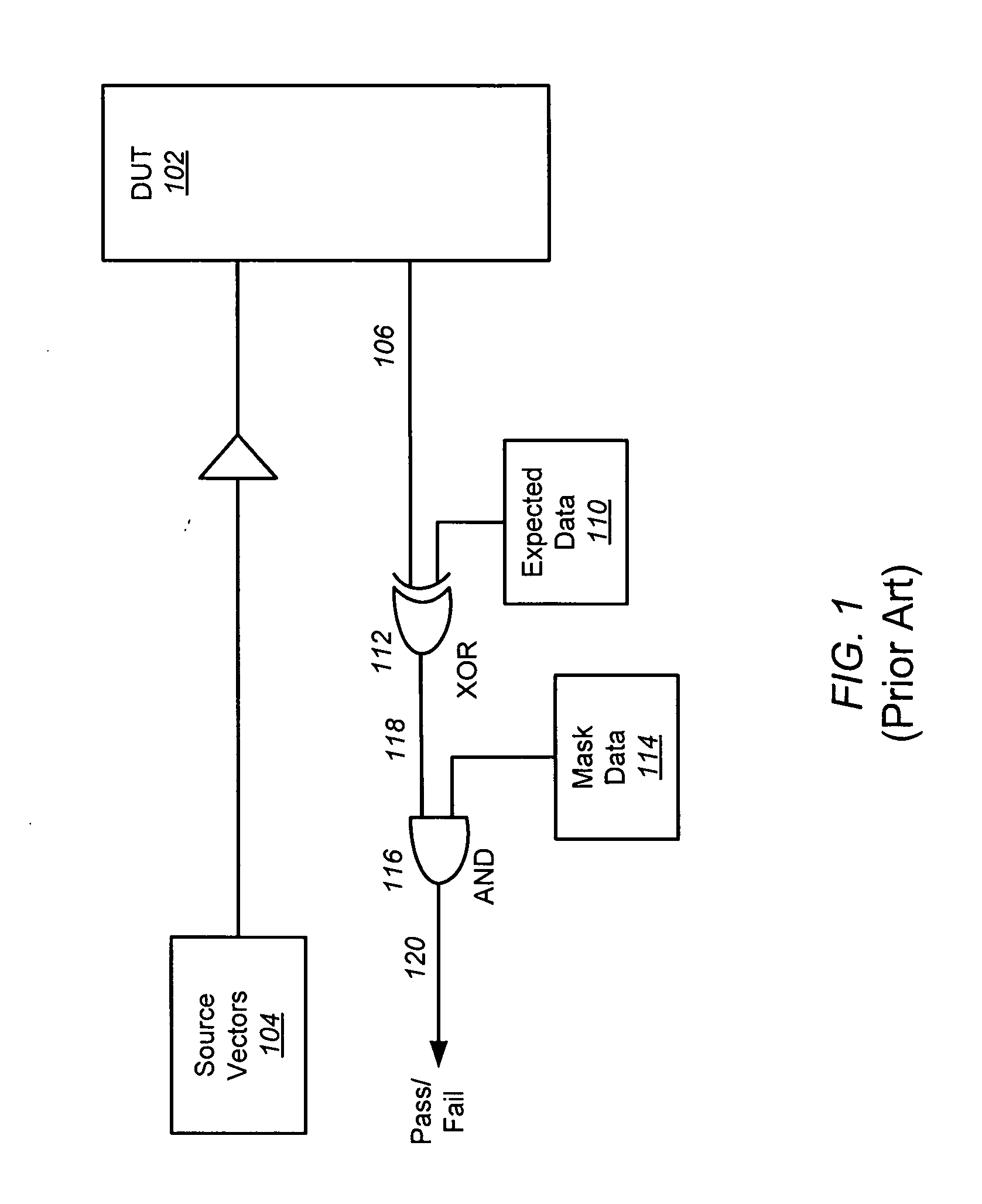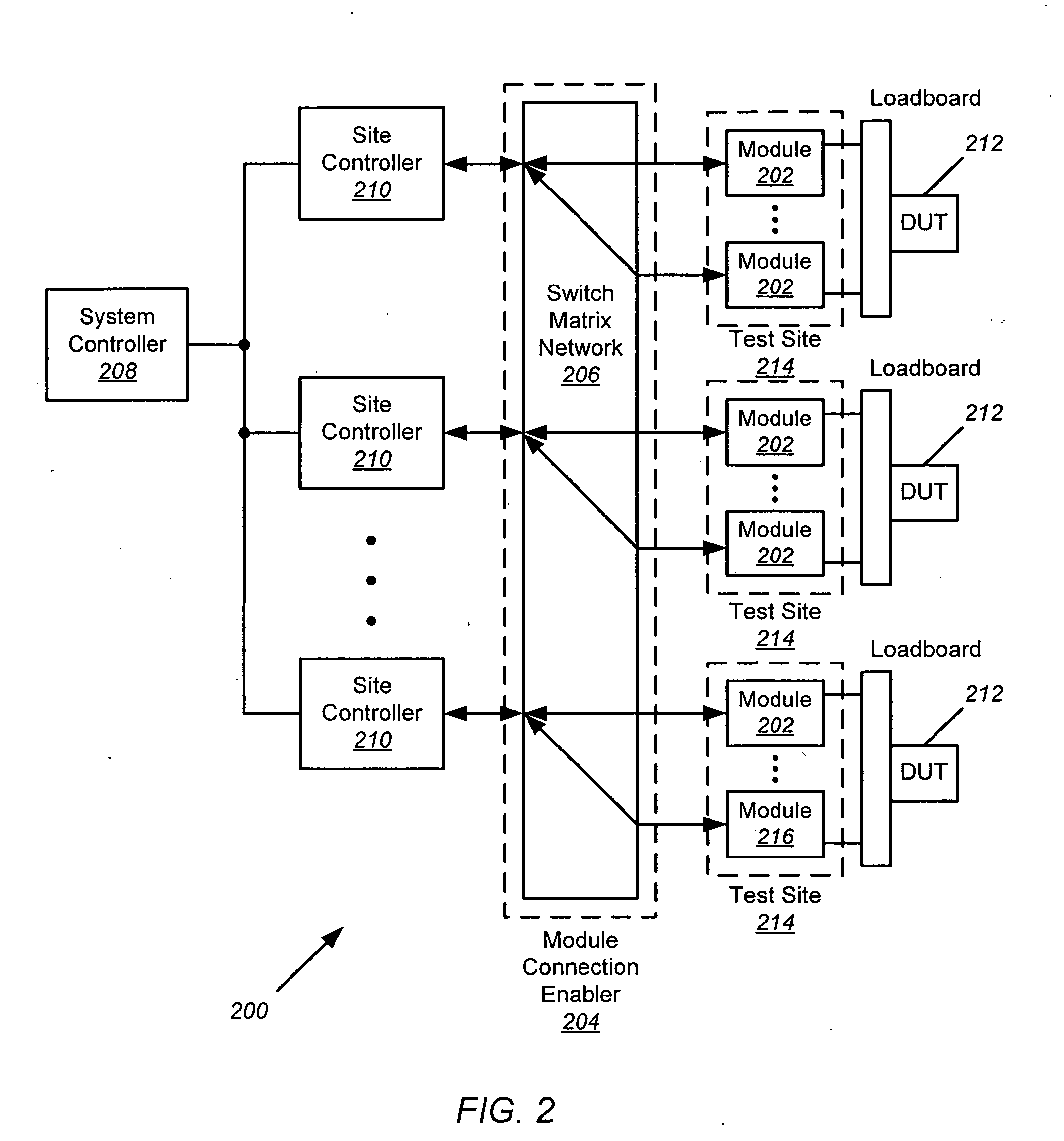Pattern controlled, full speed ATE compare capability for deterministic & non-deterministic IC data
a technology of ic data and deterministic data, applied in the testing system of semiconductor devices, individual semiconductor devices, semiconductor/solid-state device testing/measurement, etc., can solve the problems of cycle slipping, indeterminate output data may occur, and significant increases in device density have not been matched by corresponding significant increases in pin counts, etc., to achieve the effect of improving test tim
- Summary
- Abstract
- Description
- Claims
- Application Information
AI Technical Summary
Benefits of technology
Problems solved by technology
Method used
Image
Examples
Embodiment Construction
[0027]In the following description of preferred embodiments, reference is made to the accompanying drawings which form a part hereof, and in which it is shown by way of illustration specific embodiments in which the invention may be practiced. It is to be understood that other embodiments may be utilized and structural changes may be made without departing from the scope of the preferred embodiments of the present invention.
[0028]Instead of using significant amounts of very high bandwidth memory for doing at-speed compares, embodiments of the present invention utilize pattern controllable SRs that are able to mask indeterminate states while performing functional tests on DUT outputs. The control either forces a known state into the SR, or disables the SR at appropriate times and for an appropriate period of time, and may do so synchronously with the received DUT output data pattern so that indeterminate states are not fed into the SR.
[0029]A high-level block diagram of an exemplary ...
PUM
 Login to View More
Login to View More Abstract
Description
Claims
Application Information
 Login to View More
Login to View More - R&D
- Intellectual Property
- Life Sciences
- Materials
- Tech Scout
- Unparalleled Data Quality
- Higher Quality Content
- 60% Fewer Hallucinations
Browse by: Latest US Patents, China's latest patents, Technical Efficacy Thesaurus, Application Domain, Technology Topic, Popular Technical Reports.
© 2025 PatSnap. All rights reserved.Legal|Privacy policy|Modern Slavery Act Transparency Statement|Sitemap|About US| Contact US: help@patsnap.com



